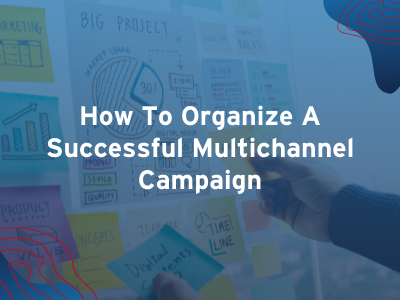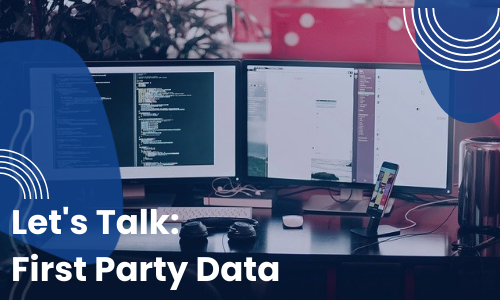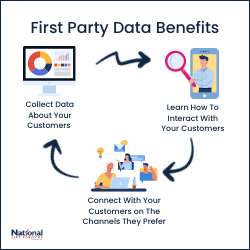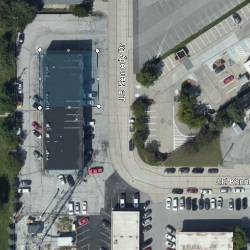What Data Do You Need To Organize Multichannel Campaign?

The key to any marketing campaign is having a well-thought-out strategy. This is especially true when planning a multichannel campaign because there are more moving pieces. What information do you need to build an effective campaign strategy? And what’s the best way to organize a successful campaign?
Why does starting with the right information impact success levels?
The right information is the fuel. There’s always a chance a poorly planned (or spray and pray) campaign may yield results. However, like putting regular gasoline in a diesel truck, you may think you are getting somewhere, but it’s just going to blow up in your face. 💥
Not only does starting with the right data and a plan give you a chance for success, but it also allows you to measure that success. Without a strategy, there’s no way to track or judge something’s effectiveness.
There are questions to ask yourself that give you the right information to build a campaign.
- Who are you targeting?
- How are you targeting them?
- What is your message?
- How are you tying your channels together?
- What data are you gathering?
- When and how are you retargeting?
Breakdown of the steps

Step 1: The Who
How do you figure who to target? The easiest way to decide who to target is to figure out what is your buyer persona. Or if you already have buyer personas, which one to use for this campaign.
Here are the questions to ask yourself to find the fundamentals of your “who.”
- What are their basic demographics?
What gender to they identify as? How old are they? Where do they live? What is their relationship status? Are they educated? - What do they do for work?
What’s their job title and description? But more than that, are they a decision maker? What do they influence at work? - What are their interests?
Do they have hobbies or interests? What do they do in their free time? Are they part of a community? - What do they want and why can’t they have?
This a big thing for figuring out what you can do to help them! What are their goals and dreams? What are their pain points? Like, what keeps them up at night? - Why wouldn’t they buy from you?
What’s stopping them from buying from you? What objections may they have? - What ways would they prefer to interact with you?
Do they use social media? Do like a particular social media? Is a phone call the best way to reach them?

Step 2: The How
Now that you know who, you probably know what marketing channels are most effective for marketing to them. Then you just need to decide what channels to use for the campaign you are planning.
How do you decide what channels to use? The most important thing is that it what’s your target audience responds to.
Other important factors to consider:
- Your budget
- What step in the sales process is this campaign

- How many channels do you want to use
Step 3: The What
What is your message? How will you modify that message for the different channels?
The What needs to be third because Who you are talking to and How you are talking to them informs the decision about messaging. For example, if you are planning on using social media as a channel, then your tone needs to be more informal and your content to be more entertaining.

Step 4: Integration
How are you going to integrate or tie the channels you are using together? Will customers interact with channels in a specific order? What type of interacts do you want your customers to have with these channels? Is there a path you want your customers to follow?

Step 5: Data gathering
Before your campaign starts, it’s important to know what data you want to learn from it. Do you want to learn data about your customers?
Other important data to track is what are the metrics you are going to use the rack the effectiveness of this campaign. Is this a branding play campaign and impressions are most important? Are email opens relevant data?
Step 6: Retargeting

Retargeting should not be an afterthought of your campaign. Any retargeting or (remarketing) should be planned out and integrated into your original campaign strategy.
Having a strategy for marketing campaigns is extremely important. However, actually planning the campaign doesn’t need to be overwhelming or complicated.
What questions have you found to be important to ask yourself when planning a marketing campaign?
Let’s Talk First Party Data

We talk about First Party Data a lot. What it is?
First party data is data that your company has collected directly from your audience which is made up of customers, site visitors, and social media followers. “First party” refers to the party that collected the data firsthand.
First Party Data is collected from the people you have the most to learn from: your current customers! That makes the data as reliable as possible.
How can you collect first party data?
You can attain first party data from your CRM, surveys and subscription-based emails or products. This is also where Google and Social Media Analytics are important.
Google Analytics has a massive list of capabilities and ways to track website data. Using tracking code, Analytics collects information about the way the website was used.
Such as:
- Time of visit
- Pages viewed
- The time spent on each page
- What browser and OS are being used
- Referring site details
- Network location and IP address.
This information can help you see where (and how) traffic is following to and through your website. Google Analytics also has a lot of other tools such as URL Builder that make it easier to track customer data.
Social media analytics are helpful for flushing out the demographics are your most engaged customers. What can you learn about customer from social media? Here’s are some things you can learn:
- What platforms your customers prefer to engage on
- What content do your customers enjoy most
- What type of campaign or advertising works for them?
- Do they have any other hobbies or interests?
- More specific customer demographics, such as age or gender
It’s also super important to connect as many touch points to your customers as possible. The more ways you have to interact with the customer the more likely they are to become a repeat loyal customer. Think about the companies you follow on social media. Have you bought from them? More than once? Are you loyal to them? Do you agree with their mission and goals? Following companies on social media feels like a personal one-on-one connection and generates loyalty.
Organization is Key
The next step of having/using first party data is organization. Having important information about your customers and leads doesn’t do much good if you can’t find it or if it’s connected properly. No matter what size your business is, having a CRM is key. The days of using a Rolodex are long gone. Now there a lot more channels of data to connect to a contact.
For example, in our CRM we keep track of more than just name, company, phone, and email. Our CRM keeps track of what social media we are connected on and any times the contact has engaged with us. We have it set up so that the CRM assigns a number value to actions a contact or lead can take, such as opening emails, clicking links, liking a post, and any orders.
How does all that information benefit us?

There are many ways! For one, we can use the information we have to target or retarget contacts, leads, and prospects. We can try different channels and types of touches until we find which one they respond best to. Having more than one channel connected to each contact makes multichannel campaigns possible.
The other advantage to First Party Data is that you can collect data and analytics about your customers from the channels you are using to constantly to learn more about your demographics and your customer’s buying habits. The more channels you use the easier it will be to learn about your customer. Then the more customers you have the more information you can learn about your potential target audience. You can use a Look-A-Like to build a list of potentials you can target based on information on your current customers.
What ways do use First Party Data?
Here’s how First Party Data might the key to the future cookie-less world.
Can you use Geo-Fencing?
We often focus on how to optimize your website and other online presences. There are also many real-world ways to generate online traffic, such as geofencing. What is geofencing? And how can you use it grow your business?

Simply put, geofencing is virtual fence around a location. You can draw out this fence around any area that you think has potential customers. For example, you can geofence your brick and mortar store. You could also put a geofence around your direct competitor’s locations.

What happens after someone enters your fence? You can target that device with an ad, relevant deal, or offer. You can use geofencing to pull people into a location they are already close to. This works great for personal and localized content.
Geofencing is also great for retargeting. We are used to retargeting people who visiting our websites so it makes sense that we would also retarget people who visited us in person. This can increase returning customers and brand awareness.
Does geofencing work? YES! According to a survey done by OuterBox Design, more than 80% of surveyed shoppers said that they used their phones while in physical stores to look for products or to compare prices. That’s a lot of possible people to target! Also, campaigns that incorporate geofencing often show much higher click through rates and engagements.
What locations would you like to geofence?
